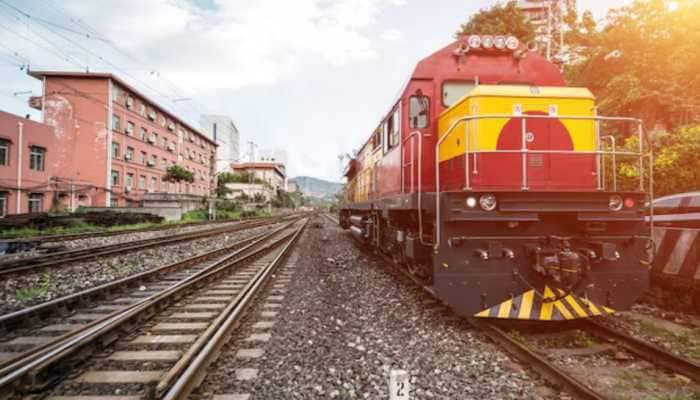India's third lunar mission Chandrayaan-3 slated for August 2022 launch
Responding to a question regarding the status of the mission, Minister of State, Science and Technology, Dr Jitendra Singh, said, that based on the learnings from Chandrayaan-2 and suggestions made by the national level experts, the realization of Chandrayaan-3 is in progress.
- ISRO is gearing up to launch its third Lunar Exploration Mission, Chandrayaan-3
- India's lunar exploration journey began with a maiden mission Chandrayaan-1 in 2008 and the second mission in 2019
- While the 2008 mission was a success, in 2019, Chandrayaan-2 failed to land successfully on the lunar surface
Trending Photos
)
New Delhi: The Indian Space Research Organization (ISRO) is gearing up to launch its third Lunar Exploration Mission Chandrayaan-3 in August 2022. This was revealed in a written reply by Minister of State, Science and Technology, Dr Jitendra Singh, to India's lower house of the Parliament.
Responding to a question regarding the status of the mission, he said, based on the learnings from Chandrayaan-2 and suggestions made by the national level experts, the realization of Chandrayaan-3 is in progress. "Many related hardware and their special tests are successfully completed, the launch is scheduled for August 2022," he added.
@isro #Chandrayaan3 India's third lunar mission to be launched in August 2022, Govt reveals
Lunar spacecraft will be launched on-board GSLV Mk 3, India's heaviest operational rocket , will have lander & rover carried on propulsion module #ISRO #India #space #moon #moonshot pic.twitter.com/RqeHquNuEj — Sidharth.M.P (@sdhrthmp) February 3, 2022
In an encouraging sign, following two years of the lull in launch activity during the pandemic lockdown and related restrictions, India has planned up to 19 missions for the calendar year 2022. According to the Minister, these include eight launch vehicle missions, seven spacecraft (satellite) missions, and four technology demonstration missions.
Notably, in a recent webinar, Dr AS Kiran Kumar, Former Chairman, ISRO had explained that Chandrayaan-3 is a follow-on mission to Chandrayaan-2 and is meant to demonstrate Lunar landing and Roving capability. He said that the Chandrayaan-3 Spacecraft would consist of a lander and rover carried on a propulsion module. He also added that the factors that led to the unsuccessful lunar landing of the Chandrayaan-2 lander were being taken care of in the latest mission.
Regarding the scientific payloads that are being carried on-board the lander and rover, he said, "The payloads on lander are Langmuir probe, Chandra's Surface Thermo Physical Experiment(ChaSTE) and Instrument for Lunar seismic activity(ILSA). The rover payloads are Alpha Particle X-Ray Spectrometer(APXS) and Laser-Induced Breakdown spectroscope (LIBS)." The former Chairman also elaborated that the Chandrayaan-3 lander is planned to perform an in-situ ChaSTE experiment of surface and sub-surface measurements of temperature.
It is meant to help understand the thermal exchange and physical properties of the uppermost Lunar soil. A thermal probe of 10cm length would be deployed on the lunar surface to perform the experiment. On the uniqueness of the mission, he said that it was the only instrument in contact with the lunar surface/subsurface and that it was the first-ever in-situ thermal measurement of the Lunar High Altitude region.
India's lunar exploration journey began with a maiden mission Chandrayaan-1 in 2008 and the second mission in 2019. While the 2008 mission was a success, the 2019 mission Chandrayaan-2 failed to land successfully on the lunar surface. As of today, only an orbiter from this mission continues to circle the moon and is expected to perform remote sensing and mapping operations and relay the data back to earth for the next few years. However, the lander and the rover it contained perished on impact with the lunar surface, after the crash landing.
Around the year 2024-25, India and Japan are expected to launch a joint lunar mission dubbed as 'LUPEX' or Lunar Polar Exploration Mission. This is meant to land at the Lunar South pole with a rover that weighs up to 350 kg. This rover is expected to carry out science experiments made by Indian and Japanese teams and conduct in-situ sample analysis. This mission is expected to have a life of up to six months. The details regarding this mission that is in the planning stage were revealed by Dr Kiran Kumar, in the webinar.
Stay informed on all the latest news, real-time breaking news updates, and follow all the important headlines in india news and world News on Zee News.
Live Tv







)
)
)
)
)
)
)
)
)
)
